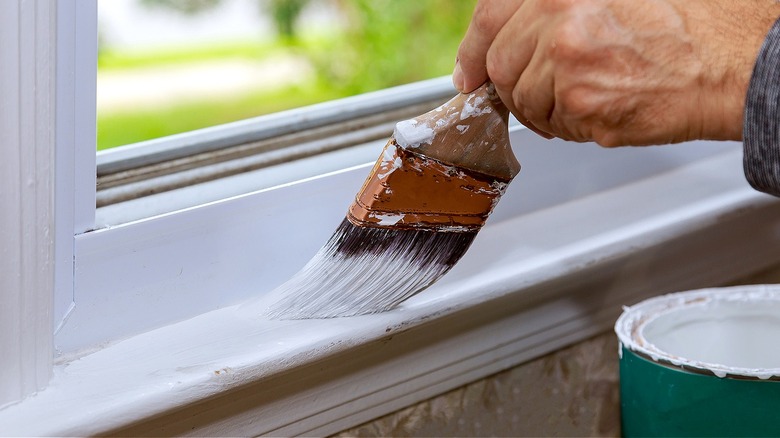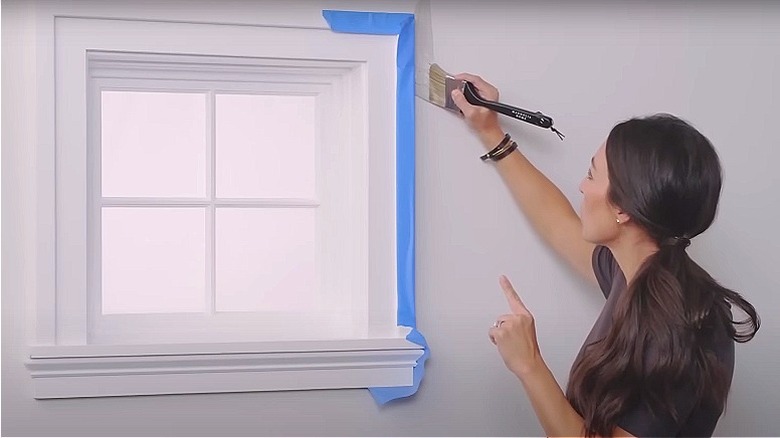The Best Paintbrush For Painting Trim, According To Fixer Upper's Joanna Gaines
When looking for home improvement advice, you'll want to get it from someone whose had success in that area, and there are few who have achieved as much success as Joanna Gaines from HGTV's "Fixer Upper." So, when she's dishing out tips for painting the home, we're all ears. Specifically, when it comes to painting a home's trim; Gaines recommends a 2.5-inch angled sash brush.
Any painting application, such as painting trim, starts with the right paintbrush for the job, and a paintbrush's size plays a big part in making any brush "the right one." Of course, the shape of the brush is also key. Gaines' choice of an angled sash brush has a lot to do with achieving a straight edge when painting.
The bristles on an angled sash brush are made to hold enough paint on the brush and navigate tight corners and curved surfaces while creating clean lines. Keeping enough paint on your brush ensures your trim will be adequately and evenly covered. Another advantage is that an angeled brush helps to prevent paint from pooling when making brush strokes so your paint coat doesn't get clumpy.
Why a sash brush is the best for trim
Joanna Gaines says it's crucial the trim in your home is properly painted, durable, and able to withstand high traffic. She recommends using a 2.5-inch angeled sash brush for the job and explains the key to painting a perfectly even trim "is to work in small sections and make sure your brush strokes go in the same direction."
Gaines' pick of a 2.5-inch sash brush is a size often recommended for painting trim because it's close to the standard size of trim, which is about 2 1/4 inches to 3 inches wide. Further, an angled sash brush works great when gliding over grooves, which trim can sometimes have, and making sure that even the grooves are well covered with paint.
When choosing a brush, you should also consider the kind of paint you're going to use for your project. Synthetic bristles are recommended for latex paints, while a natural bristle is used for oil-based paints. Brushes also have plastic or wooden handles, so you'll have to decide which you prefer and will be comfortable in holding. Gaines says for cutting in, for example, you should hold a brush "like a pencil, so you have a really good grip."
Cutting in around trim with an angled sash brush
The angled edge of a sash brush, also referred to as a "cutting brush," allows for proper precision when painting around trim, corners, or hard-to-reach areas. This precision also prevents you from accidentally painting the ceiling or the floor.
To cut in paint around trim, you actually don't need painter's tape, but if you would prefer to add it as a fail-safe, that works, too. The cutting-in technique, which Joanna Gaines says is a great way to achieve professional-looking results, only requires a steady hand, which, of course, requires a comfortable grip on the right-sized brush.
When cutting in around trim, start about a quarter of an inch off the trim. Next, as Gaines explains, you'll want to "let the paint go off the longer bristles [of the angled sash brush] first," and then follow this path all the way down. Then, once the edges are trimmed out — and while the paint is still wet — roll your paint onto the wall, all the way up to your newly painted border, for an expert finish.

